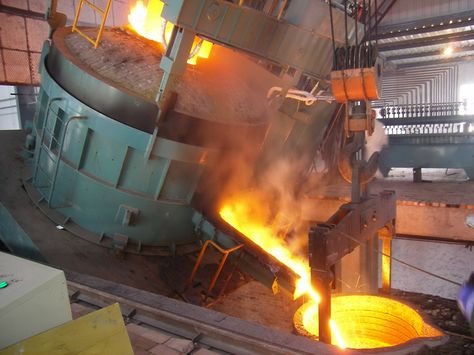By Jeff Ferry, CPA Chief Economist
The Section 232 steel tariffs are reducing the volume of steel imported into the US, providing breathing space for the US industry, which is expanding.
The latest data on steel production, imports, and investment show the steel tariffs, enacted in March 2018 are delivering results for steel companies and their employees.
Figures from the steel industry trade association and the US Census show that last year the US imported 27.9 million tons of steel, down 17.3 percent from the 2018 figure. Figures on weekly steel production show that in the week ended February 8 production totaled 1.899 million tons, for a capacity utilization rate of 81.4 percent.
Those are the two key measures targeted by the 232 tariffs. It’s essential to get import penetration down, to enable US steel production to rise. And the rise in capacity utilization is important to enable US steel producers to earn a reasonable profit and invest in expansion. The key figure of 80 percent capacity utilization was cited by the Department of Commerce and steelmakers as a benchmark that enables the industry to invest confidently in the future.
In the first three quarters of 2019, US steel companies invested $978 million in expansion, according to the New York Times. The investment includes new steel mills and expansions of existing mills. Most of the investment projects are in the south, the Midwest, and Texas. For example, US producer Nucor recently began operations at a new $400 million mill in Sedalia, Missouri. The mill employs some 250 steelworkers at an average pay of $65,000 a year. That’s roughly double the income of a typical worker in this semi-rural part of Missouri, close to the Mississippi River. As local officials and business people told CPA last year, the Nucor mill is attracting other companies to the area, generating an increase in wages in the region, and stimulating housing construction.
Controversy
Tariffs are always controversial. The economics profession in the US has campaigned against tariffs for decades, and President Trump’s opponents have joined them in campaigns to discredit the effectiveness of tariffs. Tariff critics have had a tough time criticizing the steel tariffs. Figures from Wall Street analysts World Steel Dynamics show that current steel prices of around $600 per ton of hot-rolled coil are some $100 lower than the pre-tariff price in early 2018. The fact that steel prices have settled at levels some 15 percent lower than they were before the imposition of a 25 percent tariff and in spite of a reduction in imports demonstrates that there is ample competition in the US steel market. It also shows that steel prices are driven not so much by imports or tariffs but by the internal dynamics of the steel market, especially the supply-demand balance which is determined by decisions made by steel service centers and large steel consumers like auto makers and the construction industry.

Figure 1: Current steel prices are below pre-tariff levels. Source: World Steel Dynamics via US Department of Commerce.
Early this week, Bloomberg Business Week published an article claiming that the US subsidiary of Indian steelmaker JSW Steel was disappointed with the tariffs because it failed to win an exclusion for the steel slabs it imports for final production at its Ohio steel mill. In the article, JSW executives admitted to the journalists that their business plan for a $500 million investment in expansion was critically dependent on winning tariff exclusions for those steel slabs.
The Department of Commerce denied JSW’s 12 requests for exclusions on imports from India and Mexico. There should be nothing surprising about this decision. The aim of the Section 232 tariffs is to rebuild the US steel industry, including raw steelmaking, semifinished products, and finished steel. In 2018, JSW began construction of a new electric arc furnace to make raw steel at Baytown, Texas. In August 2019, JSW announced it was stopping construction, citing “current market conditions and the prevailing policy environment.” It filed suit last July against the federal government, claiming the tariff exclusion denials were unreasonable.
Apparently, depressed steel prices have led JSW to abandon its plan to expand its US-based raw steel production. Instead, it is waging a campaign in the US courts and friendly print media (Bloomberg Business Week is owned by Mike Bloomberg, a presidential candidate with what appears to be a personal vendetta against Donald Trump).
To any objective observer, the denial of an exclusion to JSW appears to be a perfectly logical decision. The aim of the 232 tariffs is to foster US steel production and restrain imports so US steelmakers can earn an acceptable return. An important objective of the tariffs is to provide an environment in which steelmakers can modernize their plants and move to the latest, most cost-effective steelmaking technologies.
In their somewhat histrionic article, the Bloomberg Business Week reporters described the JSW facility in Ohio as looking like a “steel industry museum.” JSW entered the US market by buying up low-priced obsolete steel facilities. If they do not wish to join the move to modern steelmaking, perhaps it would be better if they find a way to exit the US market.
Leading US steelmakers, including Nucor, US Steel, and Steel Dynamics are investing, modernizing, and paying good salaries to their staff. That’s the future the US steel industry needs.













